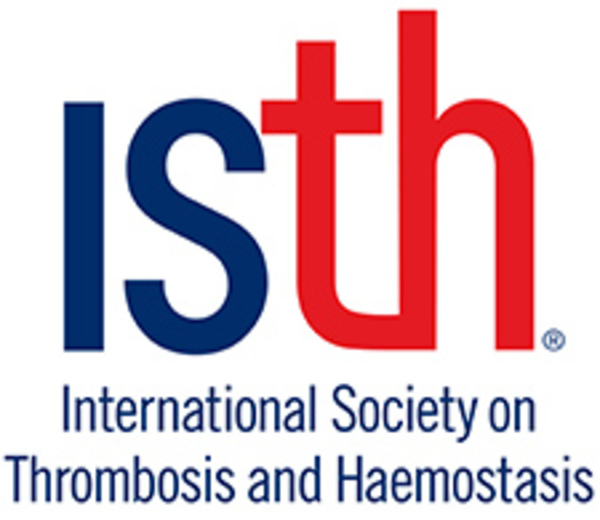World Thrombosis Day encourages public to "Move Against Thrombosis" to celebrate 10 years of raising awareness worldwide
 |
CHAPEL HILL, N.C., Oct. 13, 2023 /PRNewswire/ -- Today is World Thrombosis Day, a global effort by the International Society on Thrombosis and Haemostasis (ISTH) to spread awareness of the signs, symptoms and risk factors of thrombosis, commonly known as blood clots.
World Thrombosis Day engages 5,000 partner organizations from 120 countries to advance understanding of the treatment and prevention of blood clots. For its 10th anniversary year, the campaign encourages people to Move Against Thrombosis with simple movements to increase blood flow.
Thrombosis can develop in, or travel to, blood vessels throughout the body, often causing symptoms that can be mistaken for other conditions. The most common signs of a blood clot in the leg, or deep vein thrombosis (DVT), can include tenderness in the calf, swelling of the ankle or foot, redness and/or warmth in the area. Signs of a blood clot in the lungs, or pulmonary embolism (PE), can include unexplained shortness of breath, rapid breathing, chest pain, rapid heart rate and/or light-headedness.
"One of the reasons that thrombosis ends up as the cause of death for one in four people worldwide is that many of its symptoms are synonymous with other common conditions," advised Lana Castellucci, M.D., chair of the World Thrombosis Day Steering Committee. "When a person experiences a leg cramp, for example, it is unlikely that they will seek a blood clot screening, and unfortunately, that can result in the condition becoming fatal. We are working to educate the public on the signs and symptoms of this prevalent condition to ensure proper medical care is sought before it's too late."
Certain risk factors can increase the likelihood of developing blood clots, specifically:
- Extended hospitalization: 60% of venous thromboembolism (VTE) cases occur during or after hospitalization, as patients are more likely to have decreased mobility.
- Cancer treatment: Patients with cancer are four times more likely to develop a serious blood clot due to surgery and chemotherapy.
- Pregnancy and postpartum: High risk during pregnancy and after delivery. Additionally, the weight of the uterus pressing on veins in the pelvis can slow circulation in the legs.
Regularly exercising and maintaining a healthy weight is important for people with these risk factors. Incorporating movement in blood clot prevention inspired World Thrombosis Day's Move Against Thrombosis theme.
To learn more, visit www.worldthrombosisday.org.
Logo - https://mma.prnasia.com/media2/454627/ISTH_Logo.jpg?p=medium600
Featured Video
Health Care/Hospital Recent Releases
- More than $9 Million Awarded to High School Scientists and Engineers at the Regeneron International Science and Engineering Fair 2024
- HOYA Group Company, PENTAX of America, Inc. and MAGENTIQ EYE Ltd. Announce their Intention to Form a Distribution Partnership for the U.S Market
- Strengthening Bonds in "Momcozy Village": A Comprehensive Review of Momcozy's Mother's Day Campaign
- Qilian International plans to adjust industrial investment
- Sean Ha (Tae Kyoung Ha), the president of USA HoneyNaps, wins an award from South Korea's Ministry of Science and ICT
- Read more
Medical/Pharmaceuticals Recent Releases
- HOYA Group Company, PENTAX of America, Inc. and MAGENTIQ EYE Ltd. Announce their Intention to Form a Distribution Partnership for the U.S Market
- Qilian International plans to adjust industrial investment
- GV Announces Cooperation with Top 500 Company in China
- LiveSpo Pharma Emerges as Vietnam's Pioneer at Vitafoods Europe 2024, Unveiling Groundbreaking Research and Product Development to Reduce Antibiotic Use in Digestive and Respiratory Care
- OMRON Healthcare's Presence at Heart Rhythm 2024 in the U.S.
- Read more
Public Interest Recent Releases
- Pfizer Receives Authorization from Health Authority for the First Dual Indication Vaccine Approved in Hong Kong
- Knight-Hennessy Scholars announces its largest cohort yet: 90 new scholars
- PAUL WATSON TO RETURN TO ANTARCTICA TO PROTECT WHALES
- Call for Nominations: Sixth Annual .ORG Impact Awards to Recognize Global Changemakers
- INTREPID Alliance Landscape of Promising Antivirals in Clinical Development Reveals Gaps in Global Defense Against Potential Future Pandemics
- Read more


